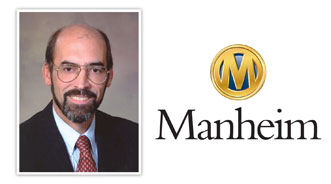2 Metrics Prompt Webb to Offer Cautious New-Vehicle Sales Outlook

While the new-vehicle SAAR ticked up above 16 million in June — marking the industry’s best performance since November 2007, Manheim’s Tom Webb approached the trend with caution.
Webb dissected two metrics — vehicle miles traveled and scrappage rates — to explain why he would caution dealers and other industry executives and observers not to have “overly high expectations.”
Before taking questions during his quarterly conference call on Monday, Webb showed a slide that tracked employment and vehicle miles of travel going back to November 2007 when vehicle miles traveled peaked. Employment peaked three months later in January 2008.
Of course, dealers know the credit crunch and recession hit later that year. Webb cited data from the Bureau of Labor Statistics that showed the U.S. economy lost 8.7 million jobs during the next 16 months. In the meantime, vehicle miles traveled softened by nearly 3 percent throughout that span.
While employment levels are recovering — Webb thinks the economy could hit that previous peak sometime next year — vehicle miles traveled remain on a slightly downward trajectory.
“Vehicle miles traveled fell during the recession, that’s quite logical and normal,” Webb said. “What is abnormal is that it has flat-lined throughout the recovery. It shows no reversal in the near-term. To my mind, vehicle miles traveled is just another way of saying vehicle consumption."
Webb then asked, “Why do we need more vehicles to drive fewer miles?”
Webb also discussed how the scrappage rate as a percentage of the vehicles in operation has been on a downward trajectory going back to 1960. In the mid 1960s, the rate surpassed 9 percent, but approached as low as nearly 4 percent as recently as 2005.
“If you’re talking about 250 million vehicles in operation, a 5-percent scrappage rate gives you 12.5 million units. Or at 6 percent, it gives you 15 million. That’s a big difference relative to what that scrappage rate is,” Webb said.
The combination of the trends analyzed in those metrics made Webb reiterate, “although some new-vehicle sales growth can be expected in 2014 and beyond … that should put some caution in new-vehicle sales going forward.”
For those managers and principals fearing that these trends might cause a headwind in the used-vehicle market, Webb wasn’t as cautious when considering vehicle miles travel and scrappage rates for dealerships that depend on used units to boost store margins.
“It slows somewhat because, basically speaking, typically almost every new-vehicle sale creates at least one used-vehicle transaction by its very nature,” Webb said. “With that, used-vehicle sales can get back to an all-time high in a short amount of time.”
Nick Zulovich can be reached at nzulovich@autoremarketing.com. Continue the conversation with Auto Remarketing on both LinkedIn and Twitter.

 View The Latest Edition
View The Latest Edition

